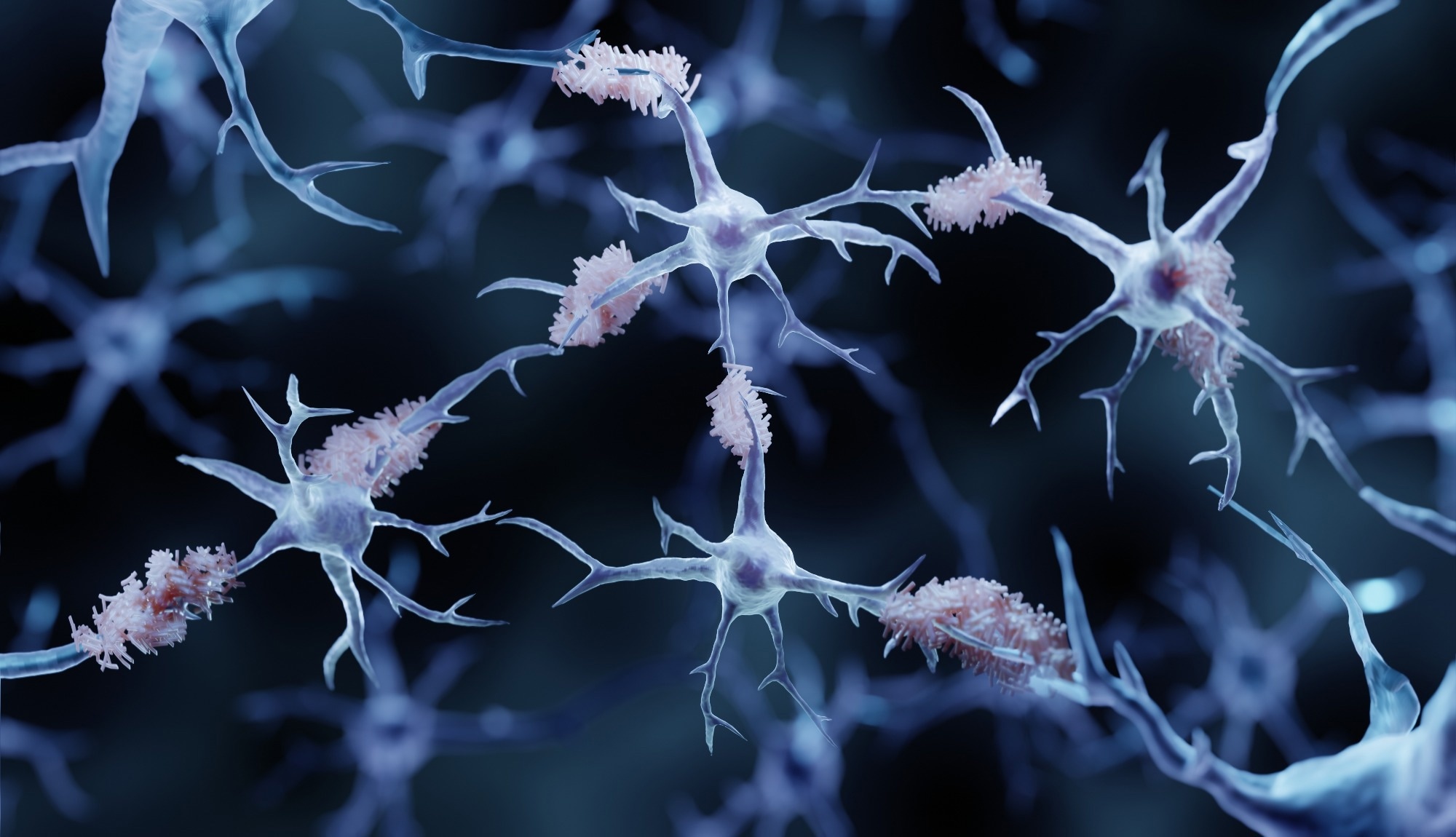Reviewed by Lauren HardakerSep 26 2025
A recent study conducted by the Icahn School of Medicine at Mount Sinai provides one of the most thorough insights to date regarding the interactions of brain cells in Alzheimer’s disease. The study, published in Cell, illustrates protein networks that expose communication breakdowns and highlight potential new therapeutic avenues for treatment.
 Image credit: ART-ur/Shutterstock.com
Image credit: ART-ur/Shutterstock.com
The study examined protein activity in brain tissue from nearly 200 individuals. The scientists found that interruptions in communication between neurons and the supportive brain cells known as glia, specifically astrocytes and microglia, are significantly associated with the advancement of Alzheimer’s disease. Notably, a protein named AHNAK was recognized as a primary contributor to these detrimental interactions.
Alzheimer’s is not just about plaque buildup or dying neurons; it’s about how the entire brain ecosystem breaks down. Our study shows that the loss of healthy communication between neurons and glial cells may be a major cause of disease progression.
Bin Zhang, Ph.D, Study Senior Author, Willard T.C. Johnson Research Professor, Neurogenetics, Icahn School of Medicine
Bin Zhang is also the Director of the Center for Transformative Disease Modeling.
The majority of research on Alzheimer’s has concentrated on the buildup of amyloid plaques and tau tangles. However, these protein accumulations alone do not provide a complete understanding of the disease, and certain treatments aimed at reducing plaques offer only limited advantages.
The research team performed an analysis that does not start with preconceived notions regarding the significance of specific proteins. This "unsupervised" approach investigated brain tissue samples from almost 200 individuals, both with and without Alzheimer’s disease.
This study took a broader view, examining how more than 12,000 proteins interact inside the brain. Using state-of-the-art proteomics profiling technology, we quantified protein expression across the brain, enabling a comprehensive view of proteomic alterations and interactions in Alzheimer’s.
Junmin Peng, Ph.D, Study Co-Senior Author, Member and Professor, Structural Biology and Developmental Neurobiology, St. Jude Children's Research Hospital
The team developed extensive networks through sophisticated computational modeling that illustrated the interactions of these proteins and identified the points at which communication fails in disease. This approach allowed for the recognition of entire systems that malfunction, rather than concentrating solely on individual molecules.
Among these systems, glia-neuron communication is critically significant, as it is central to the proteomic networks associated with Alzheimer’s. In a healthy brain, neurons transmit and receive signals, while glial cells provide support and protection. However, in the case of Alzheimer’s, this equilibrium seems to be disrupted: glial cells become excessively active, neurons lose functionality, and inflammation increases. This was consistently observed across various independent datasets.
Examining the alterations in proteomic networks associated with Alzheimer’s, the researchers pinpointed several "key driver" proteins, molecules that appear to significantly influence initiating or hastening the disease progression.
Among the highest-ranked drivers was AHNAK, a protein predominantly located in astrocytes. The research team discovered that AHNAK levels increase as Alzheimer’s advances and correlate with elevated concentrations of harmful proteins in the brain, including amyloid beta and tau. The team used human brain cell models derived from stem cells. A reduction in AHNAK within these cells resulted in decreased tau levels and enhanced neuronal function when co-cultured in the laboratory.
These results suggest that AHNAK could be a promising therapeutic target. By lowering its activity, we saw both less toxicity and more neuronal activity, two encouraging signs that we may be able to restore healthier brain function.
Dongming Cai, MD, Ph.D, Study Co-Senior Author, Professor of Neurology and Director, Grossman Center for Memory Research and Care, University of Minnesota
Although AHNAK presents a promising opportunity for future pharmaceutical development, the research establishes a wider context for comprehending and addressing Alzheimer’s disease. The investigation uncovered over 300 proteins not typically examined in Alzheimer’s, providing opportunities for new research.
Furthermore, it revealed that various biological factors, such as gender and genetic predisposition, may affect the behavior of these protein networks. For example, individuals possessing the APOE4 gene, a recognized genetic risk factor for Alzheimer’s, have unique patterns of network disruption in contrast to those who do not carry the gene.
While further investigation is required to explore AHNAK and other significant proteins within living systems, the extensive data generated from this study is accessible to researchers globally, helping advancement throughout the field.
“This study opens up a new way of thinking about Alzheimer’s, not just as a buildup of toxic proteins, but as a breakdown in how brain cells talk to each other. By understanding those conversations and where they go wrong, we can start to develop treatments that bring the system back into balance,” added Dr. Zhang.
Source:
Journal reference:
Wang, E., et al. (2025) Multiscale proteomic modeling reveals protein networks driving Alzheimer’s disease pathogenesis. Cell. doi.org/10.1016/j.cell.2025.08.038